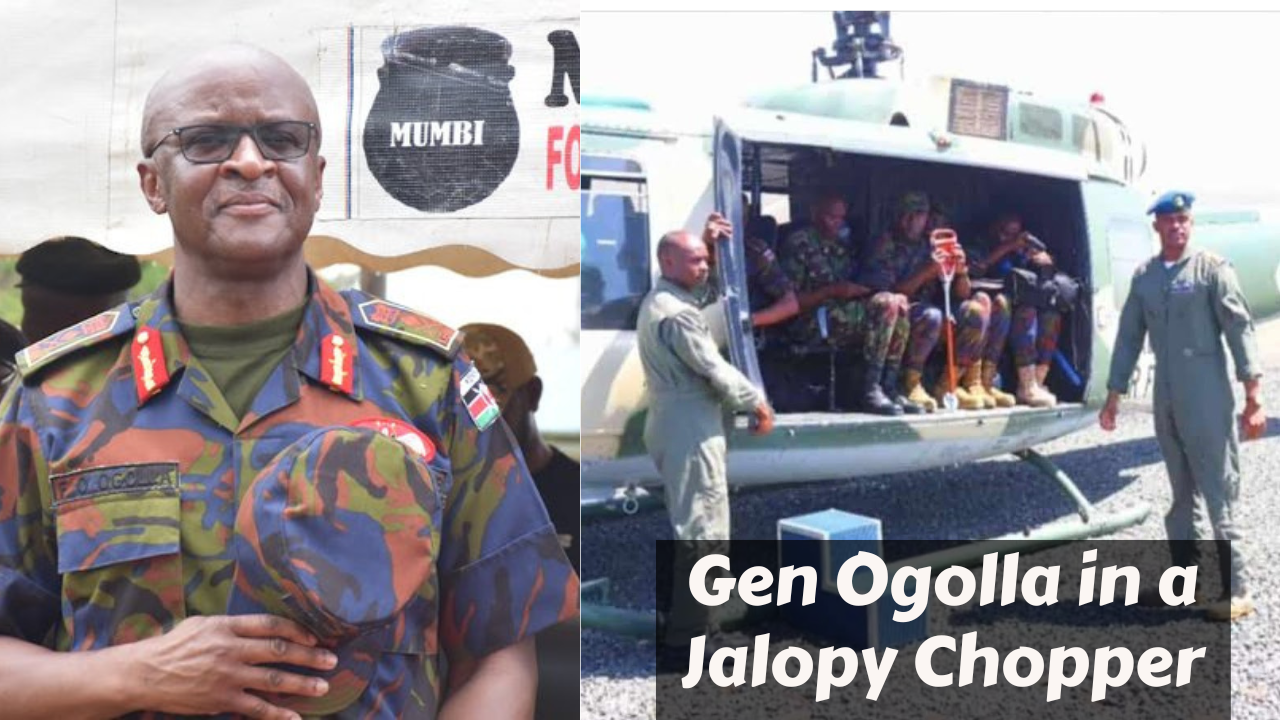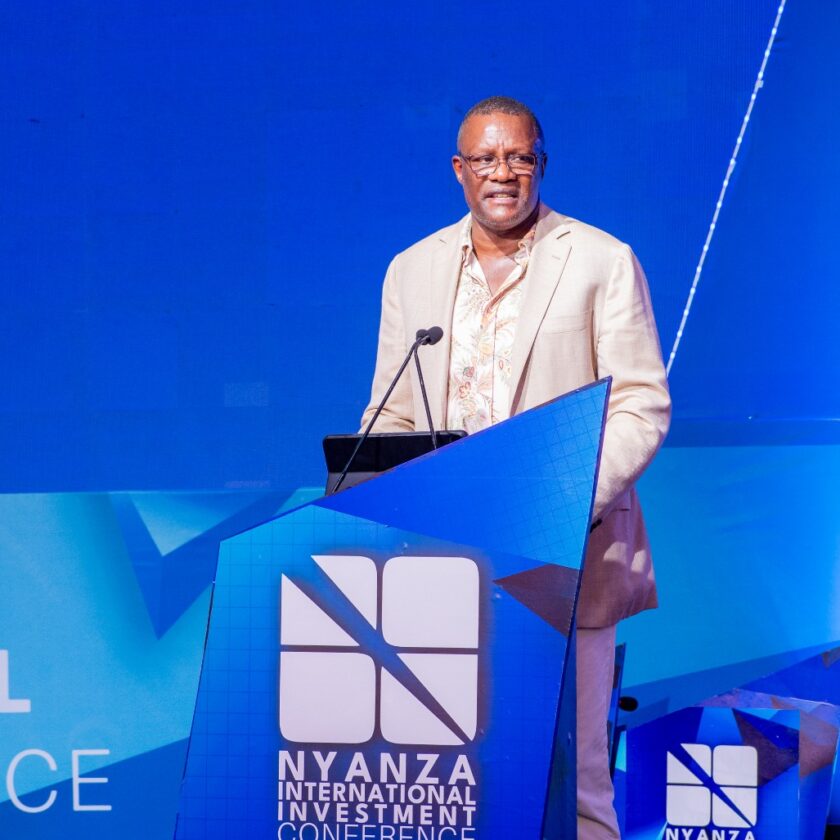In the shadowy corridors where power and politics intersect, the sudden and catastrophic demise of Kenya’s Chief of Defence Forces, Francis Omondi Ogolla, in a mysterious helicopter crash not only stirs the murky waters of speculation but also demands an exhaustive dissection of the events leading to the tragedy. The fatal crash that claimed his life, alongside nine others, unearths a plethora of questions that hinge not merely on mechanical failures but potentially on orchestrated foul play.
The revelation that the original helicopter designated for General Ogolla was inexplicably swapped for an antiquated de Havilland Tiger chopper—a relic from wartime—just moments before departure, diverts the narrative towards a darker, possibly conspiratorial direction. This older aircraft, passed over to the Chief of Defence Forces while a presumably more airworthy craft was reallocated to a politician close to President William Ruto, paints a sinister picture of potential foreknowledge and neglect.
On the day that sealed his fate, General Ogolla was photographed inside the dilapidated cabin, an image that starkly contrasted with the dignity of his position. Clutching his CDF stick, surrounded by the cramped confines of a visibly aging helicopter, the General’s decision to board such a compromised vessel strikes as either an act of unsuspecting trust or enforced necessity. The cramped space and the shabby condition of the helicopter are now central to the swirling controversy, hinting at a gross undervaluation of safety and protocol, particularly for a figure of Ogolla’s stature.
The incident, characterized by the helicopter’s rotor failure mere moments after takeoff, precipitated a fatal descent that culminated in a catastrophic roof collapse upon impact. This sequence of events is alarmingly atypical and warrants a critical examination under the lens of sabotage, particularly considering the high-profile nature of Ogolla and the strategic implications of his role.
Delving deeper into the technical nuances, the specter of mechanical and engine sabotage emerges as a chilling possibility. It is conceivable that nefarious elements could have manipulated the rotor system or the engine itself, ensuring failure at the most vulnerable moment of flight—the takeoff. Such precision in tampering points to a deeply sinister plot, aimed at masking an assassination within the folds of an apparent accident.
Fuel contamination and electrical tampering offer additional avenues through which the crash could have been engineered. Introducing subtle yet lethal contaminants into the helicopter’s fuel could effectively cripple the engine, leading to the observed rotor malfunction. Similarly, meddling with the electrical systems could disrupt critical flight controls, rendering the aircraft uncontrollable. Both methods imply a disturbing level of access and familiarity with the aircraft’s operations, suggesting an inside job possibly executed by someone within the military’s own ranks or contracted externally.
Moreover, the structural integrity of the helicopter and its maintenance history might also reveal layers of deliberate oversight or falsification. Undetected damages to the rotor blades or improper maintenance procedures could precipitate such a failure, especially if maintenance logs had been doctored to conceal any potential issues. This aspect of the investigation would not only uncover the immediate causes of the crash but could also expose a trail of complicity that might extend up the chain of command.
Was the Last Minute Switch of Helicopters Orchestrated?
The role of environmental factors and overloading must also be scrutinized, albeit they appear less likely in this scenario. Absence of adverse weather conditions at the time of the crash reduces the probability of natural causes, thus accentuating the likelihood of human intervention. Overloading the helicopter, while an indirect method, could nevertheless be employed to ensure an overstressed rotor system, subtly engineered to fail under the guise of an operational oversight.
The imperative for a rigorous, comprehensive investigation transcends conventional accident analysis. It necessitates a foray into the realm of high-stakes espionage and internal security assessments. Such an investigation should not only focus on the wreckage but also encompass a review of security protocols, access logs, and personnel movements leading up to the flight. Every individual who had access to the aircraft or was involved in its maintenance must be meticulously vetted, with their backgrounds and recent activities thoroughly examined.
Understanding the motives behind such a targeted assassination, if indeed it was one, is paramount. Ogolla’s position at the helm of Kenya’s military operations might have made him privy to sensitive information or controversial decisions that could have positioned him as a target. The motives for eliminating him could range from internal political rivalries to external threats, each adding layers of complexity to the narrative.
The transparency of the investigative process is equally crucial. To ensure the integrity of the findings and to maintain public trust, the proceedings should be as open as possible, potentially under the oversight of international observers. This openness will not only serve to dispel rumors and speculation but also reinforce the rule of law and democratic accountability in a region where both are often under threat.
If the switch of helicopters was orchestrated with knowledge of the Tiger’s deficiencies, it points to a chilling disregard for human life that borders on criminal. Such actions could potentially ripple through the echelons of power, suggesting a web of complicity that might extend as far as the upper political players. As the investigation unfolds, it must seek not only to uncover the immediate causes of the crash but also to expose any underlying schemes that endangered the lives of General Ogolla and his companions, ensuring accountability reaches all who had a hand in this tragic oversight.
Surely, the tragic crash that snuffed out the life of a top military leader under suspicious circumstances serves as a grim reminder of the ever-present dangers lurking within the shadows of power. Whether the result of a tragic mishap or a calculated assassination, the truth must be pursued relentlessly and with utmost diligence.
Only through a thorough, transparent, and unyielding investigation can justice be served for Francis Omondi Ogolla and the others who perished in that fateful flight. The sanctity of their memories and the stability of the nation they served demand no less than a resolute quest for clarity and accountability in this perplexing and potentially ominous case.
Kenneth Ochieng




